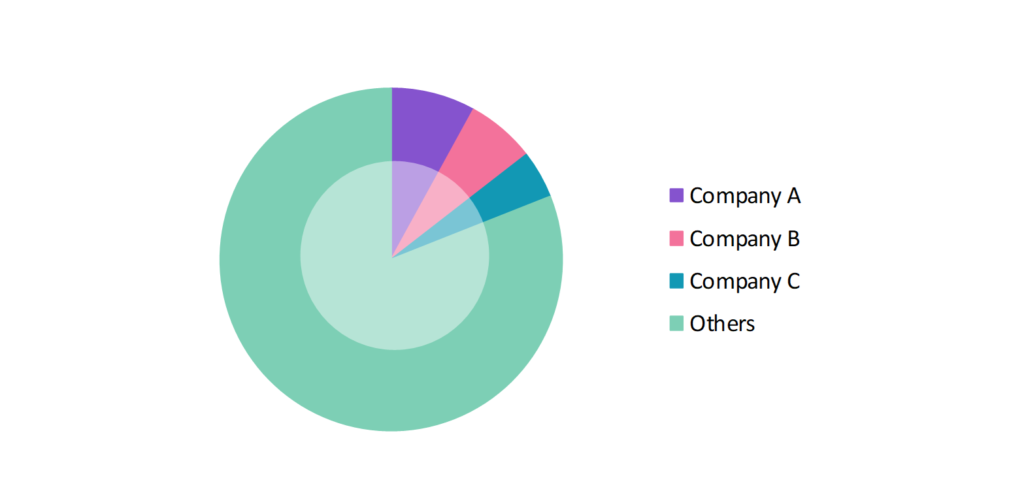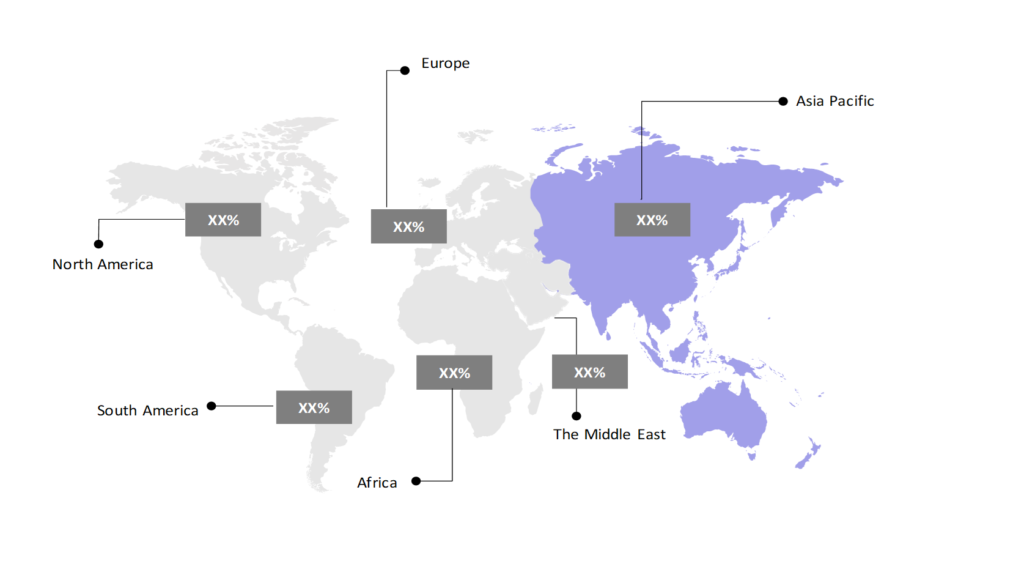Logistics Outsourcing Market: Size, Share, Trends & Forecast (2024-2029)
The market report offers a detailed analysis segmented by Logistics Providers (3PL, 4PL, 5PL, Others); by Service Type (Material Management, Supply Chain Management, Distribution Management, Shipment Packaging, Channel Management, Others); by Mode of Transportation (Railways, Roadways, Waterways, Airways, Others); by Geography (North America, South America, Asia Pacific, Europe, The Middle East, Africa).
Market Dimensions & Growth Potential

- The logistics outsourcing market is estimated to be at USD 1,115,368.15 Mn in 2024 and is anticipated to reach USD 1,403,497.78 Mn in 2029.
- The logistics outsourcing market is registering a CAGR of 4.7% during the forecast period of 2024-2029.
- The global logistics outsourcing market is experiencing robust growth, driven by the increasing complexity of supply chains, cost pressures, and the need for operational efficiency.
Request a free sample.
Competitive Landscape & Market Positioning in 2023

- The global logistics outsourcing industry participants are always developing strategies to preserve a competitive advantage.
- These companies primarily use acquisitions, R&D, partnerships, and technological launches.
- Several important entities in the logistics outsourcing market include DHL Group; United Parcel Service, Inc.; XPO, Inc.; Ryder System, Inc.; DSV A/S; and others.
Ask for customization.
Report Objectives & Insights
| Attributes | Values |
| Historical Period | 2018-2022 |
| Base Year | 2023 |
| Forecast Period | 2024-2029 |
| Market Size (2024) | USD 1,115,368.15 Mn |
| Market Size (2029) | USD 1,403,497.78 Mn |
| Growth Rate | 4.7% CAGR from 2024 to 2029 |
| Key Segments | Logistics Providers (3PL, 4PL, 5PL, Others); Service Type (Material Management, Supply Chain Management, Distribution Management, Shipment Packaging, Channel Management, Others); Mode of Transportation (Railways, Roadways, Waterways, Airways, Others); Geography (North America, South America, Asia Pacific, Europe, The Middle East, Africa) |
| Key Vendors | DHL Group; United Parcel Service, Inc.; XPO, Inc.; Ryder System, Inc.; DSV A/S |
| Key Countries | The U.S; Canada; Mexico; Brazil; China; India; Japan; South Korea; Australia; Indonesia; Thailand; Philippines; The UK; Germany; Italy; France; Spain; Turkey; UAE; Saudi Arabia; Egypt; South Africa |
| Largest Market | Asia Pacific |
Get a free quote.
Market Trends & Future Outlook
- Integration of IoT and Big Data Analytics: The Internet of Things (IoT) and big data analytics enhance logistics management. For example, in June 2023, UPS implemented IoT-enabled sensors in its delivery fleet to monitor vehicle performance and optimize routes, demonstrating the trend of leveraging data for improved logistics efficiency.
- Blockchain Technology in Logistics: The use of blockchain technology to enhance transparency and security in logistics is growing. For example, in August 2023, IBM and Maersk launched a blockchain-based platform for tracking shipments, showcasing the potential of blockchain in improving logistics processes.
- Sustainable Logistics Practices: There is a growing focus on sustainability in logistics outsourcing as companies and consumers increasingly prioritize environmental responsibility and social impact. Logistics providers are adopting green practices to minimize their carbon footprint and enhance the sustainability of their operations.
Speak to analyst.
Key Market Influencers & Growth Drivers
- Globalization of Supply Chains: The globalization of supply chains drives the demand for logistics outsourcing as businesses seek to manage increasingly complex international operations. Outsourcing logistics allows businesses to leverage the expertise and networks of specialized third-party providers, enabling them to streamline operations, reduce costs, and focus on their core competencies.
- Focus on Core Competencies: Businesses outsource logistics to focus on their core activities. For example, in 2024, Unilever announced a partnership with DHL Supply Chain to manage its European warehousing and distribution, allowing Unilever to concentrate on product innovation and marketing.
- Technological Advancements: The adoption of advanced technologies by 3PL providers enhances logistics services. In March 2024, FedEx introduced a new AI-driven logistics platform to optimize delivery routes and improve supply chain visibility, showcasing the role of technology in logistics outsourcing.
Inquire before buying.
Market Obstacles & Growth Barriers
- Risk of Dependence on 3PL Providers: Relying too heavily on third-party logistics providers exposes companies to risks like service disruptions, quality issues, and the providers’ financial instability. For instance, in January 2024, a cyberattack on a major 3PL provider led to severe disruptions in the supply chains of several automotive companies, underscoring the risks of depending on external logistics partners.
- Quality Control Issues: Ensuring consistent quality in outsourced logistics services is challenging due to limited control over third-party logistics (3PL) providers’ operations. Quality issues result in delays, damaged goods, and diminished customer satisfaction. Additionally, discrepancies in service standards between the company and its 3PL partner led to operational inefficiencies and increased costs.
- Complexity of Supply Chain Integration: Integrating outsourced logistics services with existing supply chain operations can be complex and time-consuming. This complexity arises from aligning different systems, processes, and technologies.
Personalize this research.
Map Highlighting Key Region in 2023

Explore purchase options.
Table of Contents
| 1. Introduction |
|---|
| 1.1. Research Methodology |
| 1.2. Scope of the Study |
| 2. Market Overview / Executive Summary |
| 2.1. Global Logistics Outsourcing Market (2018 – 2022) |
| 2.2. Global Logistics Outsourcing Market (2023 – 2029) |
| 3. Market Segmentation |
| 3.1. Global Logistics Outsourcing Market by Logistics Providers |
| 3.1.1. 3PL |
| 3.1.2. 4PL |
| 3.1.3. 5PL |
| 3.1.4. Others |
| 3.2. Global Logistics Outsourcing Market by Service Type |
| 3.2.1. Material Management |
| 3.2.2. Supply Chain Management |
| 3.2.3. Distribution Management |
| 3.2.4. Shipment Packaging |
| 3.2.5. Channel Management |
| 3.2.6. Others |
| 3.3. Global Logistics Outsourcing Market by Mode of Transportation |
| 3.3.1. Railways |
| 3.3.2. Roadways |
| 3.3.3. Waterways |
| 3.3.4. Airways |
| 3.3.5. Others |
| 4. Regional Segmentation |
| 4.1. North America |
| 4.1.1. The US |
| 4.1.2. Canada |
| 4.1.3. Mexico |
| 4.2. South America |
| 4.2.1. Brazil |
| 4.2.2. Argentina |
| 4.2.3. Colombia |
| 4.2.4. Chile |
| 4.2.5. Rest of South America |
| 4.3. Asia Pacific |
| 4.3.1. China |
| 4.3.2. India |
| 4.3.3. Japan |
| 4.3.4. South Korea |
| 4.3.5. Rest of Asia Pacific |
| 4.4. Europe |
| 4.4.1. The UK |
| 4.4.2. Germany |
| 4.4.3. Italy |
| 4.4.4. France |
| 4.4.5. Spain |
| 4.4.6. Rest of Europe |
| 4.5. The Middle East |
| 4.5.1. Turkey |
| 4.5.2. UAE |
| 4.5.3. Saudi Arabia |
| 4.5.4. Rest of the Middle East |
| 4.6. Africa |
| 4.6.1. Egypt |
| 4.6.2. South Africa |
| 4.6.3. Rest of Africa |
| 5. Value Chain Analysis of the Global Logistics Outsourcing Market |
| 6. Porter Five Forces Analysis |
| 6.1. Threats of New Entrants |
| 6.2. Threats of Substitutes |
| 6.3. Bargaining Power of Buyers |
| 6.4. Bargaining Power of Suppliers |
| 6.5. Competition in the Industry |
| 7. Trends, Drivers and Challenges Analysis |
| 7.1. Market Trends |
| 7.1.1. Market Trend 1 |
| 7.1.2. Market Trend 2 |
| 7.1.3. Market Trend 3 |
| 7.2. Market Drivers |
| 7.2.1. Market Driver 1 |
| 7.2.2. Market Driver 2 |
| 7.2.3. Market Driver 3 |
| 7.3. Market Challenges |
| 7.3.1. Market Challenge 1 |
| 7.3.2. Market Challenge 2 |
| 7.3.3. Market Challenge 3 |
| 8. Opportunities Analysis |
| 8.1. Market Opportunity 1 |
| 8.2. Market Opportunity 2 |
| 8.3. Market Opportunity 3 |
| 9. Competitive Landscape |
| 9.1. DHL Group |
| 9.2. United Parcel Service, Inc. |
| 9.3. XPO, Inc. |
| 9.4. Ryder System, Inc. |
| 9.5. DSV A/S |
| 9.6. Company 6 |
| 9.7. Company 7 |
| 9.8. Company 8 |
| 9.9. Company 9 |
| 9.10. Company 10 |
Know the research methodology.
Logistics Outsourcing Market – FAQs
What is the current size of the logistics outsourcing market?
In 2024, the logistics outsourcing market size is $1,115,368.15 Mn.
Who are the major vendors in the logistics outsourcing market?
The major vendors in the logistics outsourcing market are DHL Group; United Parcel Service, Inc.; XPO, Inc.; Ryder System, Inc.; DSV A/S.
Which segments are covered under the logistics outsourcing market segments analysis?
The logistics outsourcing market report offers in-depth insights into Logistics Providers, Service Type, Mode of Transportation, and Geography.
